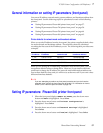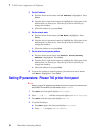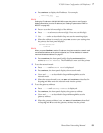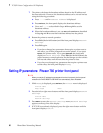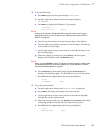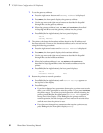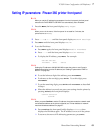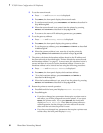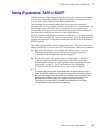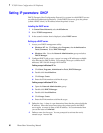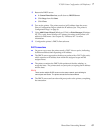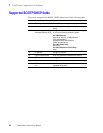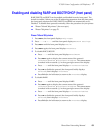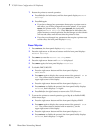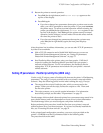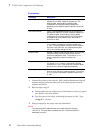PhaserShare Networking Manual
65
TCP/IP Printer Configuration (All Platforms)
7
Setting IP parameters: RARP or BOOTP
With this method, configuration information is sent to the printer over the Ethernet
or Token Ring connection via RARP or BOOTP, depending on which protocol your
host supports. This is called Dynamic Address Resolution.
The advantage of server-based configuration is that it provides centralized
administration. You can configure a number of printers from a central location. The
disadvantage is that if the server is down, the printer does not appear on the
network after a reset or power cycle, because the printer gets its boot information
from a boot server and does not retain it in non-volatile memory.
Store the printer’s configuration information on a boot server, in a configuration file
such as an ethers or bootptab file. On power-up, the printer issues RARP and BOOTP
requests and receives the configuration information from the server in the RARP or
BOOTP response.
The RARP response contains only IP address information. After the printer has its
address information, you can set other TCP/IP parameters by either of two methods:
■ With a TCP/IP connection and a World Wide Web browser, you can use
PhaserLink Printer Management Software; see “Setting IP parameters:
PhaserLink Printer Management Software” on page 73.
■ Send PostScript files to the printer using your host spooler. UNIX shell
scripts for creating the PostScript files are provided with your printer’s
network utilities software. See “Setting IP parameters: PostScript utility file
(UNIX only)” on page 71. For PC environments, the PostScript file
IPCONFIG.PS is in the UTILS directory on your printer’s CD-ROM.
N
O
T
E
The printer’s BOOTP and RARP implementations do not support booting across a
router. The BOOTP or RARP server (host) and client (printer) must be connected to
the same Token Ring or Ethernet segment, or to segments interconnected only by
repeaters and/or bridges. However, with certain hosts (such as OS/2) on Token
Ring networks, the server and the client must be on the same Token Ring.
Furthermore, the printer’s BOOTP and RARP implementations do not support
booting between Token Ring and Ethernet segments.



